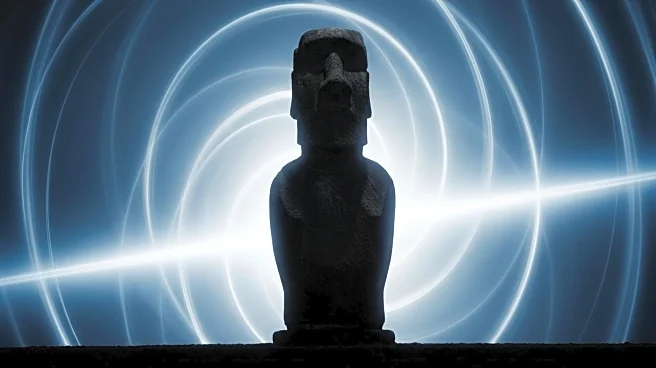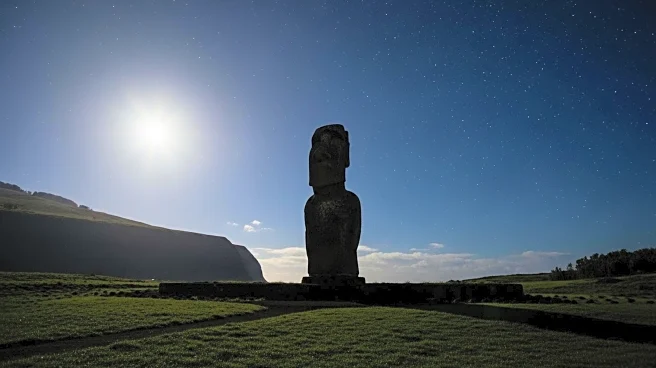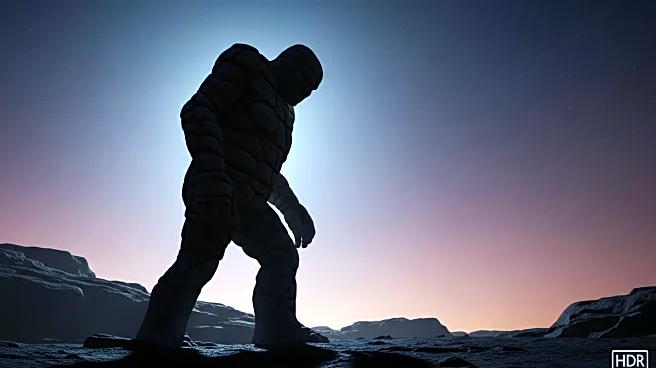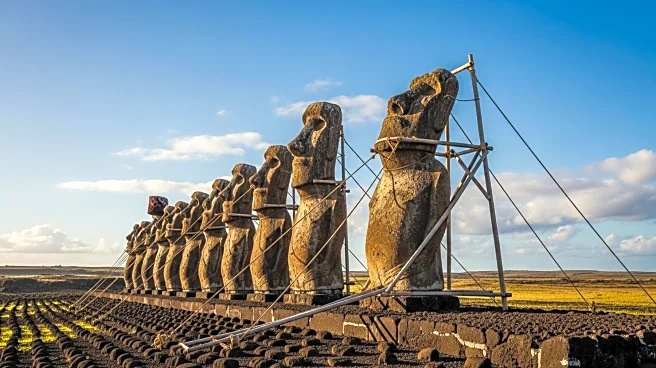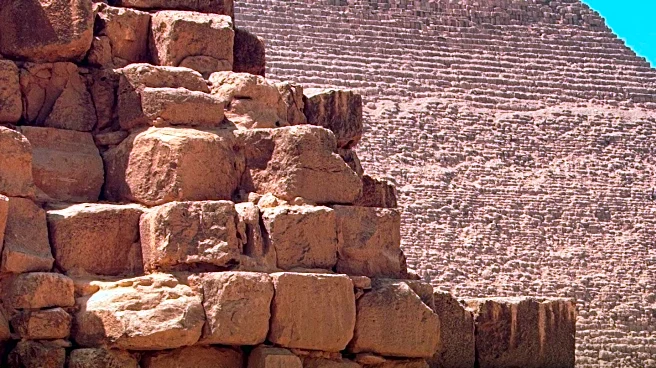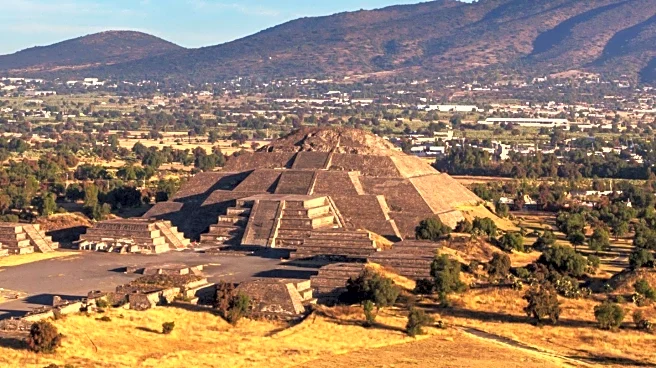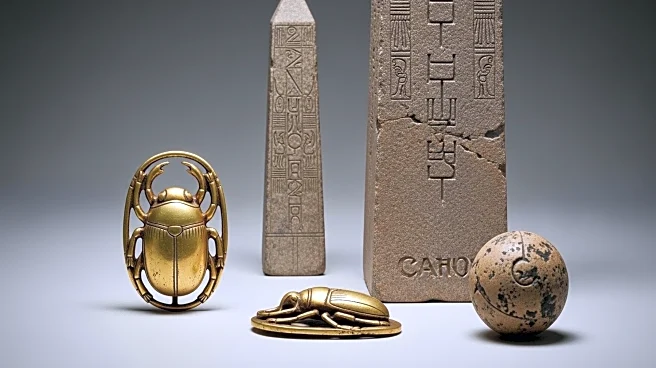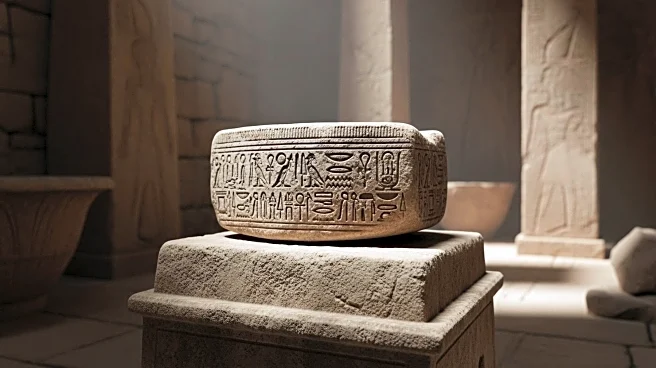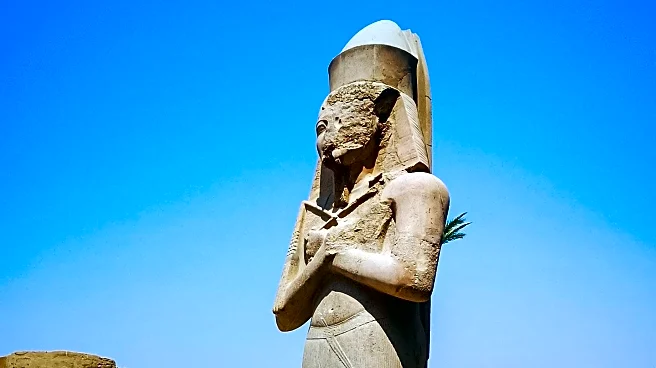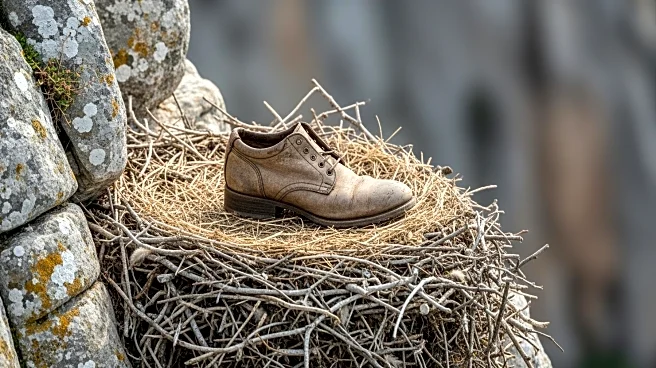What's Happening?
Recent research has provided compelling evidence that the moai statues of Easter Island were transported upright using a unique engineering method. Anthropologist Carl Lipo from Binghamton University and Terry Hunt from the University of Arizona led the study, which utilized physics, 3D modeling, and field experiments. The research analyzed nearly 1,000 moai statues, focusing on 62 statues found along ancient roads. These statues have distinctive features, such as a wide, D-shaped base and a leaning-forward position, which facilitated a rocking motion that allowed them to 'walk' to their locations. A 4.35-ton replica was created to test this hypothesis, and it was successfully moved 100 meters by a team of 18 people using ropes, confirming the feasibility of the method. This approach required minimal labor and no wooden rollers, challenging previous theories of horizontal transport through deforestation.
Why It's Important?
The findings are significant as they align with Rapa Nui's oral traditions, which describe the statues 'walking' to their ceremonial platforms. This research not only provides insight into the engineering capabilities of the ancient inhabitants but also challenges previous assumptions about the environmental impact of statue transport. The study suggests that the islanders built both the statues and roads as an interconnected system, advancing gradually toward the statues' final locations. This method reflects a sophisticated understanding of physics and resource management, highlighting the ingenuity of the Rapa Nui people.
What's Next?
The study addresses previous challenges to the walking hypothesis, such as terrain steepness and rope strength, demonstrating that these factors do not invalidate the model. Future research may focus on further exploring the spatial distribution of moai and the construction of roads to understand the full extent of the islanders' engineering strategies. Additionally, the findings may inspire new archaeological methods for studying ancient transport systems and monument construction.
Beyond the Headlines
The research offers a deeper understanding of the cultural and technological achievements of the Rapa Nui people. It highlights the importance of integrating oral traditions with scientific inquiry to uncover historical truths. The study also prompts a reevaluation of how ancient societies utilized their environment and resources, potentially influencing modern perspectives on sustainable practices.

